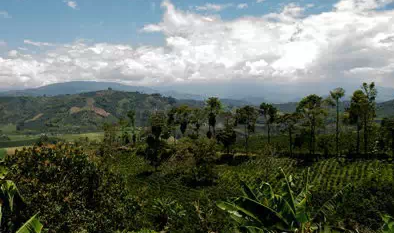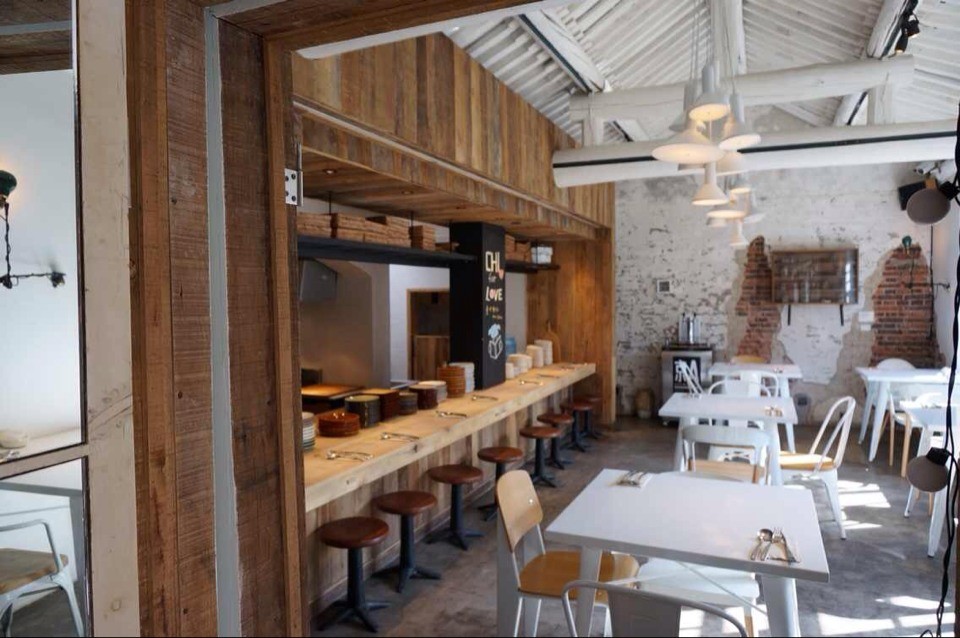How does a coffee seed become delicious in a cup?
People in Seattle are curious. They want to know where their food comes from. We may know what kind of chicken we eat, or which farm our usual carrots come from, or which beach our oysters for dinner come from. Although Seattle people now prefer locally produced farm and livestock products, the same drink they need every day comes from the other side of the world. Few people can figure out how coffee beans from Africa, South America or Central America closest to them are grown and disposed of. To this end, with the help of the Colombian Coffee Growers Association (FNC), I had the privilege of experiencing the coffee from a seed to a sapling, and then to our cup delicious.

At first, I was skeptical about the trip. Colombia has long been famous for producing high-quality boutique coffee. But once upon a time, Colombian coffee was questioned. I noticed that not all beans from the Huila region could be selected by Slate Coffee Roasters. Robin Pollard, a micro-batch roaster from Vashon's Pollard Coffee, also admits that she was not bullish on all kinds of coffee when she first started baking coffee five years ago. But now she prides herself on the quality of Colombian coffee.
With these questions, I began my coffee journey. I want to see Colombia's coffee hero, Juan Valdez (Juan Valdez). Although I finally realized that Valdez was not real, I met Don Ario Rios (Don Arilio Rios), the award-winning owner of the Fina La Descansa plantation. Don Aririo and his wife entertained me warmly and invited me to dine on their plantation. It is not easy to get to their plantation. You have to take several hours by plane from Bogota, the capital of Colombia, and then transfer to a bus to get there. Like other Colombian coffee growers, Don Aririo's plantation covers an area of only a few hectares. You know, there are 550000 coffee plantations in Colombia, each with an average area of only 4 hectares. Almost all plantations sell coffee through the Colombian Coffee Growers Association (FNC). Don Aririo's plantation was once part of his grandfather's plantation. As the generations passed on, the plantation became smaller and smaller. Among his siblings, Don Aririo is the only remaining coffee grower.

Don Aririo first showed me the breeding process of coffee. His saplings are disease-resistant species specially selected by the research branch of the FNC Association according to the local soil and climate. He also said that the research arm of the FNC Association is all funded by export duties on coffee. The seeds of coffee are buried in nursery boxes. The soil in the nursery box comes from a nearby river bed. After a few weeks, Don Aririo will move one of the seeds, the fully germinated seedlings, to a separate pouch for cultivation. The distance between trees depends on the altitude of the planting site. After 18 months of vigorous growth, the coffee tree will begin to produce attractive coffee fruit. The grower prunes the coffee tree every five years. Each coffee tree needs at most three pruning, that is, the life span of the plant is about 15 years.
After that, we took a quick look at the whole plantation. There are no ladders in the plantation. The picker can easily pick the coffee fruit. There is only one picker here. He always carries a radio with him and a small bag around his neck. In other areas, plantations usually need more help during the harvest season. But because pickers are usually unsettled, and there are so many crops across the United States that need to be picked, it is very difficult to find enough people. The picker moves so fast that he can pick out the reddest and fullest ones from the colorful fruits. As he told me how to pick and pick fully ripe coffee fruit, he continued to pick it, without slowing down at all. At the end of the day, he would give the coffee fruit in his pocket to the owner of the garden in exchange for wages. Wages are calculated according to the number of kilograms of fruit and the proportion of fully ripe fruit.

Don Aririo chose to deal with the freshly picked fruit on the plantation. You can overlook the exquisite raw bean processing workshop from the top of the hill. The fruit will fall down the roof pipe into the Rube Goldberg-esque desizing machine. The vibration of the machine will separate the skin and pulp from the coffee beans. Then the coffee beans go into a washing machine. Washing will wash off the residual mucous membrane on the surface of raw beans. This process takes a long time to ferment. Eventually, the raw beans will fall into a sink and can be manually selected, tested and graded after cleaning.
The last process of raw beans before leaving the factory is drying. The raw beans are evenly spread in a greenhouse-like dry shed. This process is extremely important. Raw beans must be completely and evenly dried in order to achieve the highest quality. It usually takes five days to dry. Until the color of the raw beans is up to standard, people will bag the raw beans and ship them to the local centralized processing plant for sale.

I followed the grower to the processing plant. Here bags of raw beans are removed from "parchment" (a layer of dry film on the surface of raw beans), sorted and graded according to quality. Don Aririo told me that once he thought the price of his coffee was too low, so he shipped all the coffee back to the plantation and waited until the price reached the expected price before selling it here. Because of the excellent quality of his beans, his coffee has been sold at the highest price here, and the coffee has also been rated as Premium coffees. You know, Colombian specialty coffee is very popular in the American coffee roasting industry.
Coffee growers like Don Aririo spend a lot of energy, time and money on cultivating the best quality coffee. That is why Colombian high-quality boutique coffee is reviving in the American market. Geoff Watts, deputy general manager of Chicago's Intelligentsia Cafe, once called Colombia "one of the best coffee producers in the world". Robin Pollard once said: "I always encourage people I meet to learn about the origin of coffee and make them realize that coffee is actually like red wine, and the process of fermentation, roasting and brewing will greatly affect the final taste of coffee." She hopes that Seattle people and coffee lovers around the world can "read more books and blogs about coffee knowledge." If you think my experience fascinates you, then you have entered your own coffee hall.
Important Notice :
前街咖啡 FrontStreet Coffee has moved to new addredd:
FrontStreet Coffee Address: 315,Donghua East Road,GuangZhou
Tel:020 38364473
- Prev

How to be a good cafe owner
I don't know who first said this sentence, love a person let him open a cafe, hate a person also let him open a cafe, this sentence is very appropriate to describe the actual state of a cafe operator, enjoy the leisure and quiet brought by the cafe. And I will continue to pay for it. The nine basic characteristics of coffee shop owners are different from ordinary meals.
- Next

Instant coffee can't be drunk, carcinogens more than smoking?
A few days ago, an article titled "Instant coffee should not be drunk, carcinogens are more than smoking" spread on the Internet. Instant coffee is said to be highly carcinogenic, containing concentrations of acrylamide, a carcinogen, even higher than cakes, French fries, potato chips and cigarettes. Ruan Guangfeng, an expert at the Food and Nutrition Information Center, said that this statement is a typical logical trap. There is no food in the world that can be described as
Related
- Why are the coffee in some coffee shops not enough after being frozen? What should I make up for my American latte cappuccino coffee after being frozen?
- How much water does it take to steam coffee by hand? Why is the coffee brewing and steaming time 30 seconds? What is the purpose of steaming coffee?
- The suspected drink contains too much caffeine! Overlord Tea Lady responds urgently!
- Starbucks rejects antique paper coupons?! Netizen: Missed marketing opportunities!
- What ratio of water temperature and ground does the smart cup method use to press coffee? The difference between brewed coffee and filtered coffee?
- What is the standard process for the purpose of coffee cup testing? What is the difference between hand-brewed coffee and cup testing?
- How to use hand-brewed coffee paragon small golden balls? How does cold coffee lock in the aroma of coffee?
- Is American coffee black? What is the difference between American coffee and drip coffee?
- Unexpected! Well-known tea beverage brand Lele Tea will withdraw from the Zhengzhou market!
- Starbucks enters the fashion and beauty industry?! Netizen: Give me an ice American eye cream

